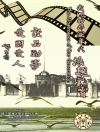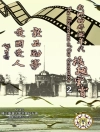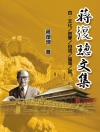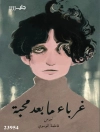Authorized Images: Famous Authors Seen Through Antique and Vintage Postcards
F. Scott Fitzgerald, Oren Arnold, Sholem Aleichem, Ernest Hemingway:
Two of this quartet are obviously giants of American literature; the other two had a substantial readership during their heyday. Of these latter two, Aleichem is moderately known beyond the sphere of those who read Yiddish due to the success of the Broadway musical Fiddler on the Roof based on his work. Though Hemingway was a Nobel laureate and a world famous celebrity, he spent most of his life out of the public eye, feeling no need to pose for postcard publishers. Fitzgerald had a more troubled life, with the result that he, too, has few vintage cards attached to his name. What examples there of both men are included in this volume.
เกี่ยวกับผู้แต่ง
Greg Gatenby is the founding Artistic Director of the annual and world-renowned International Festival of Authors in Toronto, and of its adjunct, the weekly Harbourfront Reading Series. Under the nearly thirty years of his leadership, the program featured readings, panels, roundtables, and talks by more than 4, 000 distinguished authors-including 21 Nobel laureates (19 of whom were featured before they had won the Nobel)-from more than 90 nations–attracting crowds, on many evenings, measured in the thousands.His programming-and Greg Gatenby himself- have received major profiles in the world’s leading periodicals. Time Magazine, for example, declared that he had, more than anyone else in the city, made Toronto one of the literary capitals of the world. The program and his directorship have also received singular praise from Newsweek, the New York Times, the Wall Street Journal, the Times of London, Le Monde, the Sydney Morning Herald, the Asahi Shinbun, Corriere della Sera, and El Pais among many others-and the Los Angeles Times described the festival he created as the ‘Olympics of world literature.’ Margaret Atwood has stated ‘Greg set the model for all the other festivals.’ British novelist Ian Mc Ewan said ‘I think he changed the nature of readings in North America and in Britain. Back in the ’70s it was always this incredibly solemn, churchy feel to a reading. Now they’re much more kind of relaxed and pleasant and there’s more of a level interchange between writers and readers. [Toronto] was the only place you came where there was a bit of pizzazz, sophistication, a sense that a reading was not a church group, more like a jazz club.’












